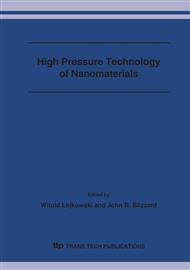p.7
p.19
p.29
p.39
p.45
p.51
p.57
p.63
p.69
Microstructures and Mechanical Property of Ni Processed by High-Pressure Torsion and Their Evolution upon Annealing
Abstract:
XRD, TEM, microhardness and thermal analysis were carried out on a series of Ni samples produced by high-pressure torsion (HPT). The evolution of microstructures and their inhomogeneity were investigated. The local microstrain showed dynamical oscillations as a function of the HPT rotations, demonstrating dynamical evolution of lattice defects during the procedure. Both XRD and TEM showed that a small difference in grain sizes remains even after 5 revolutions of HPT with smaller grain sizes at the peripheral region of the sample. The higher microhardness at the peripheral region is the result of the smaller grain sizes and the higher density of lattice defects, compared with the central region. Thermal treatment at a heating rate of 20K/min from room temperature to 473K did not result in decreased microhardness, but increased by about 10% for samples treated with not more than 3 rotations of HPT. The increase in microhardness was attributed to further grain refinement, the formation of a larger fraction of high-angle grain boundaries and grain boundaries being closer to equilibrium after recovery.
Info:
Periodical:
Pages:
45-50
Citation:
Online since:
July 2006
Authors:
Keywords:
Price:
Сopyright:
© 2006 Trans Tech Publications Ltd. All Rights Reserved
Share:
Citation:


